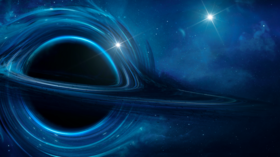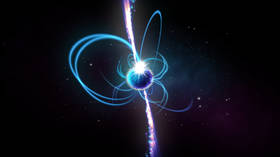Black hole ‘bigger than the majority of galaxies in the universe’ discovered

An ‘ultramassive’ black hole described as being on the “upper limit” of how big the cosmic bodies can theoretically become has been discovered by UK scientists, according to a study published on Wednesday by the Royal Astronomical Society.
A team from Durham University discovered the black hole using a technique called gravitational lensing, which enables the observation of phenomena in the distant universe by detecting how they interact with passing light.
Research leader Dr. James Nightingale said discovering this black hole was “extremely exciting” given that it is “roughly 30 billion times the mass of our sun” – a size, he says, which places it high on the scale of how big modern science understands that black holes can become.
“Even as an astronomer, I find it hard to comprehend how big this thing is,” Nightingale told BBC Radio on Wednesday. “This black hole is bigger than the majority of galaxies in the universe.”
Nightingale added that the sheer size pushes science’s understanding of black holes to its very limits. He also questioned how a black hole of such incredible mass could be formed “in just 13 billion years of the universe’s existence.”
A black hole is an extremely dense object in space that has gravity so strong that nothing, not even light, can escape from it. Ultramassive black holes are thought to be the biggest objects in the universe and are believed to be at the center of large galaxies, such as the Milky Way.
However, several blind spots still remain as to humanity’s understanding of ultramassive black holes. Their precise origins are unclear but one prevalent theory is that they were formed by the collisions of massive galaxies billions of years ago in the universe’s infancy.
The findings in Wednesday’s report had their origins in 2004, when Durham University Professor Alastair Edge first noticed a telltale arc of light while conducting a review of images of a deep space galaxy survey.
The study of the object progressed with the assistance of Germany’s Max Planck Institute, high resolution imagery from NASA’s Hubble telescope and supercomputer facilities at Durham University, which confirmed the presence of the black hole.













